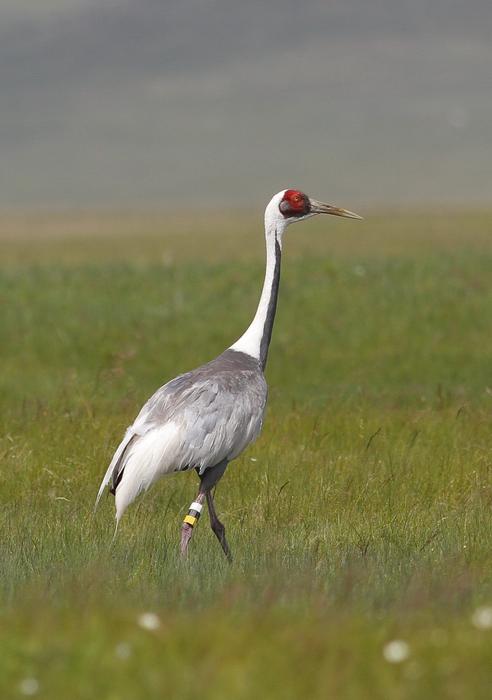Many wonder how birds migrate vast distances. A study in the Proceedings of the National Academy of Sciences investigates that and also looks into the “where,” “when,” and “why” of avian travel. They found that birds flock to drastically different environmental conditions that meet different needs over the course of a year.
Crane Tracking
Researchers affixed GPS tracking devices to the legs of 104 cranes in Africa, Asia, and Europe. They learned that some cranes traveled nearly 4,000 miles and crossed massive mountain ranges, vast deserts, and large bodies of water. Then, they developed statistical techniques that helped them tie the birds’ movements to environmental conditions, like water, vegetation, and temperature.
“Animals have to satisfy their own needs with what they can get from their environment, but both of these are changing constantly,” Scott Yanco, first author on the study and a postdoctoral researcher at the University of Michigan, said in press release. “This creates an intriguing optimization problem that we wanted to know if cranes were solving through long-distance migration.”
Changes in temperature and the presence of food and water played a large effect on the travel of the four crane species the researchers tracked. The researchers suspect that the birds have different biological needs during different times of the year. For example, common cranes favored farmland during the late summer — a time when they are raising their young and preparing for fall migration. “This is exactly when we would expect them to want easy access to food,” said Yanco, who was a graduate student at Yale during the study.
Tough Choices
Other species have different needs at different times and sometimes must make tough choices. The black-necked cranes in the study had to decide between safe roosting habitat and abundant resources. The birds made different choices depending on the time of year. During migration, they looked for safer roosting conditions, but during breeding, they focused on access to food.
“This type of shifting emphasis depending on what cranes need at any given time is what we were expecting to see,” Ivan Pokrovsky, a postdoctoral researcher at MPI-AB and the last author on the study, said in a press release. “But we were blown away by how well the cranes used movement to resolve trade-offs among competing needs and to access certain environments during key periods of the year.”
Environmental Motivation
Understanding how the environment affects animals does more than answer the question of what motivates birds to pick a particular place at a particular time. It could also help develop policies to mitigate the effects of climate change and the loss of biodiversity on animals.
“When we know how animals use certain environmental conditions, we can make better predictions about how species might respond to human-caused global change and develop more effective interventions that ensure we preserve the conditions species need to survive,” Pokrovsky said in a statement.
Source : Discovermagazine













